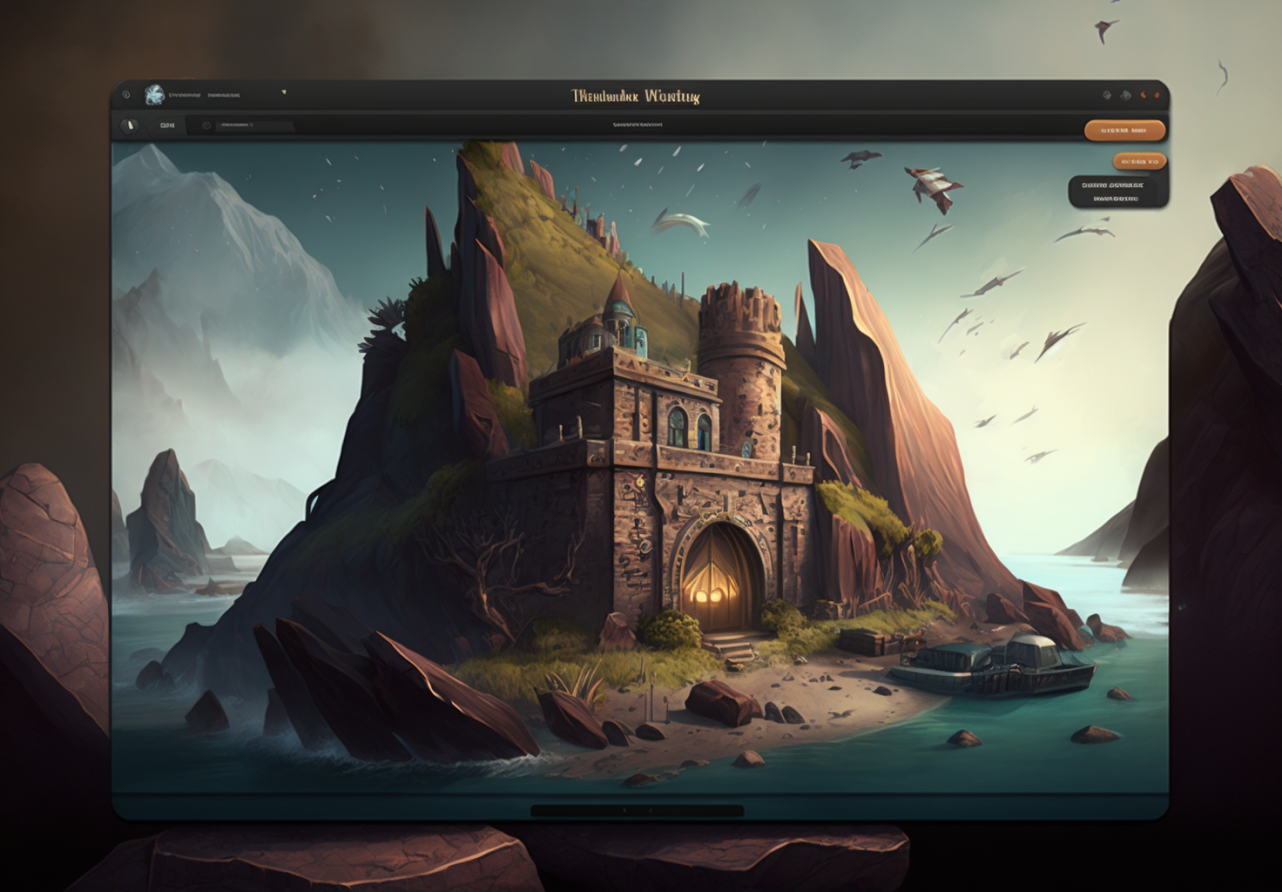A Complete HTML5 Game Development Guide
Table of Contents
- Introduction to HTML5 Game Development
- Advantages of HTML5 Game Development
- HTML5 Game Development Technologies
- Setting Up Your Development Environment
- HTML5 Canvas Element
- CSS3 for Game Development
- JavaScript for Game Development
- ES6 and Modern JavaScript Features
- JavaScript Libraries and Frameworks
- Game Design Principles
- Game Loop and Animation
- Handling User Input
- Collision Detection
- Game Physics
- Game Audio
- Game State Management
- Game Art and Asset Creation
- Implementing Game AI
- Mobile Game Development
- Multiplayer Game Development
- Game Monetization Strategies
- Game Performance Optimization
- Cross-browser Compatibility
- Testing and Debugging
- Deployment and Distribution
- HTML5 Game Engines
- Building a Game Development Portfolio
- HTML5 Game Development Resources
- Industry Trends and Future Developments
- Final Thoughts
1. Introduction to HTML5 Game Development
HTML5 game development refers to the process of creating interactive games using HTML5, JavaScript, and CSS3. These games can be played on a variety of platforms, including web browsers, smartphones, and tablets. This comprehensive guide aims to cover all aspects of HTML5 game development, providing you with the tools and knowledge needed to create engaging games.
2. Advantages of HTML5 Game Development
HTML5 game development offers numerous advantages over traditional game development methods. These include:
- Cross-platform compatibility
- No need for browser plugins or third-party software
- Simplified development process
- Access to a wide range of libraries and frameworks
3. HTML5 Game Development Technologies
To create HTML5 games, developers utilize a combination of technologies, including:
- HTML5: The core markup language for structuring content
- CSS3: The style sheet language for defining the look and feel of the game
- JavaScript: The programming language for implementing game logic
4. Setting Up Your Development Environment
Before starting HTML5 game development, you'll need to set up a development environment. This includes:
- A text editor, such as Visual Studio Code or Sublime Text
- A web browser, such as Google Chrome or Mozilla Firefox
- A local web server, such as XAMPP or Node.js
5. HTML5 Canvas Element
The HTML5 canvas element provides a drawing surface for rendering 2D graphics and animations. To create a canvas, add the <canvas> element to your HTML document and use JavaScript to draw shapes, images, and text.
6. CSS3 for Game Development
CSS3 is used to style and position HTML elements in your game. This includes styling text, creating animations, and applying visual effects.
7. JavaScript for Game Development
JavaScript is the primary language used for implementing game logic, handling user input, and managing game state. You'll need to learn fundamental JavaScript concepts, such as variables, functions, loops, and conditionals, to create interactive HTML5 games.
8. ES6 and Modern JavaScript Features
Modern JavaScript features, introduced in ES6 (ECMAScript 2015), can simplify game development. These include arrow functions, classes, modules, and promises.
9. JavaScript Libraries and Frameworks
There are numerous JavaScript libraries and frameworks available to assist with HTML5 game development. Some popular options include:
- Phaser: A powerful 2D game framework
- Three.js: A library for creating 3D graphics
- CreateJS: A suite of libraries for creating rich interactive content
10. Game Design Principles
To create engaging HTML5 games, it's essential to understand game design principles. This includes elements such as:
- Gameplay mechanics
- Story and narrative
- Level design
- Player progression and rewards
11. Game Loop and Animation
The game loop is a continuous cycle that updates the game state, processes user input, and renders the game to the screen. Implementing a smooth game loop and animations is crucial for a responsive and enjoyable gaming experience.
12. Handling User Input
Capturing and processing user input, such as keyboard, mouse, and touch events, is crucial for creating interactive games. JavaScript event listeners and the HTML5 Gamepad API can be used to handle various input methods.
13. Collision Detection
Collision detection is a fundamental aspect of game development, used to determine when game objects interact or collide. There are various algorithms and techniques available to handle collision detection, depending on the complexity of the game.
14. Game Physics
Implementing realistic game physics can enhance the player experience. This includes simulating movement, gravity, and collisions. Several JavaScript libraries, such as Matter.js and Box2D, can help simplify the process of incorporating physics into your game.
15. Game Audio
Adding audio to your HTML5 game can create a more immersive experience. The Web Audio API and the HTML5 <audio> element can be used to implement sound effects and background music in your game.
16. Game State Management
Managing game state involves keeping track of the current state of the game, such as the player's score, level progress, and inventory. This information needs to be updated, stored, and accessed throughout the game.
17. Game Art and Asset Creation
Creating visually appealing game assets, such as characters, backgrounds, and user interface elements, is an essential aspect of game development. Tools like Adobe Photoshop, Illustrator, and open-source alternatives like GIMP and Inkscape can be used for asset creation.
18. Implementing Game AI
Incorporating artificial intelligence (AI) into your HTML5 game can make it more challenging and engaging. This may involve creating enemy AI, pathfinding algorithms, or decision-making systems for non-player characters.
19. Mobile Game Development
Developing HTML5 games for mobile devices requires consideration of factors such as performance optimization, touch controls, and responsive design. Additionally, tools like Apache Cordova can be used to package HTML5 games as native mobile apps.
20. Multiplayer Game Development
Creating multiplayer HTML5 games involves implementing real-time communication between players, typically using technologies such as WebSockets or WebRTC. Additionally, server-side programming may be required to manage game state and enforce game rules.
21. Game Monetization Strategies
Monetizing your HTML5 game can involve strategies such as in-game advertising, in-app purchases, and selling the game on platforms like Steam or the App Store.
22. Game Performance Optimization
Optimizing the performance of your HTML5 game is crucial for ensuring smooth gameplay across various devices and platforms. Techniques for performance optimization include minimizing asset sizes, optimizing rendering processes, and using web workers for offloading heavy tasks.
23. Cross-browser Compatibility
Ensuring that your HTML5 game works correctly in different web browsers requires testing and addressing compatibility issues. Utilizing feature detection, polyfills, and following web standards can help maintain cross-browser compatibility.
24. Testing and Debugging
Testing and debugging are essential steps in the game development process, ensuring that your game is free of bugs and performs as expected. Using browser developer tools and debugging techniques can help identify and fix issues in your game.
25. Deployment and Distribution
Deploying and distributing your HTML5 game involves hosting it on a web server, making it accessible to players through a URL, or packaging it as a standalone app for distribution on various platforms. Some popular game distribution platforms include:
- itch.io
- Newgrounds
- Kongregate
- Steam
26. HTML5 Game Engines
Game engines can simplify the development process by providing pre-built features and tools. Popular HTML5 game engines include:
- Phaser
- Construct 3
- Babylon.js
- Godot (with HTML5 export)
27. Building a Game Development Portfolio
Creating a portfolio of your game development projects is crucial for showcasing your skills to potential employers or clients. Include a variety of projects that demonstrate your abilities in different aspects of game development, such as programming, art, and design.
28. HTML5 Game Development Resources
There are numerous resources available to learn and improve your HTML5 game development skills, such as:
- Online tutorials and courses
- Books and eBooks
- Blogs and websites dedicated to game development
- Forums and online communities
29. Industry Trends and Future Developments
Staying up-to-date with industry trends and emerging technologies can help you stay competitive in the game development market. Some current trends and developments in the HTML5 game development space include:
- Virtual reality (VR) and augmented reality (AR) integration
- Cloud gaming and game streaming services
- The rise of Progressive Web Apps (PWAs) for games
30. Final Thoughts
HTML5 game development is a versatile and powerful way to create engaging, cross-platform games. By mastering the core technologies, design principles, and development techniques outlined in this guide, you'll be well-equipped to create compelling games and succeed in the world of HTML5 game development.






